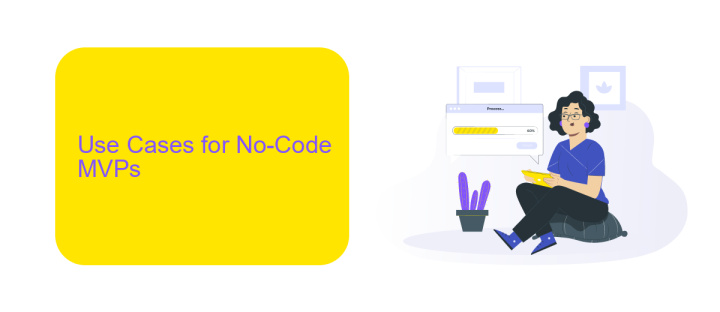No-Code MVP
In today's fast-paced tech landscape, building a Minimum Viable Product (MVP) without writing a single line of code has become a game-changer for entrepreneurs and startups. No-code platforms empower innovators to quickly prototype, test, and iterate their ideas, significantly reducing time-to-market and development costs. This article explores the benefits, tools, and strategies for creating a successful No-Code MVP.
No-Code MVP Concept and Benefits
Creating a No-Code MVP (Minimum Viable Product) allows entrepreneurs and startups to quickly validate their ideas without extensive coding skills. By leveraging no-code platforms, they can build functional prototypes that demonstrate core features and gather user feedback efficiently.
- Rapid development and deployment
- Cost-effective solution
- Easy to iterate and improve
- Accessibility for non-technical founders
- Integration with various tools and services
One significant advantage of a No-Code MVP is the ability to integrate with other services seamlessly. Tools like ApiX-Drive enable users to connect their MVP with various applications, automating workflows and enhancing functionality. This integration capability ensures that the MVP can grow and adapt to user needs without significant redevelopment efforts.
Use Cases for No-Code MVPs

No-Code MVPs are particularly useful for entrepreneurs and startups looking to validate their ideas quickly without extensive technical expertise. By leveraging no-code platforms, they can build functional prototypes, gather user feedback, and iterate on their concepts with minimal investment. This approach is ideal for market testing, where speed and adaptability are crucial. For instance, a founder can use no-code tools to create a landing page, set up a basic e-commerce store, or even develop a simple app to showcase their product or service.
Another significant use case for No-Code MVPs is in the realm of internal tools and automation within established businesses. Companies can streamline their operations by creating custom workflows and automating repetitive tasks without relying on their IT departments. Services like ApiX-Drive can be particularly beneficial here, as they allow seamless integration between various applications and systems, enabling businesses to automate data transfers and synchronize information effortlessly. This not only enhances efficiency but also frees up valuable resources, allowing teams to focus on more strategic initiatives.
Benefits of Building an MVP with No-Code Platforms

Building an MVP with no-code platforms offers numerous advantages that can significantly streamline the development process. These platforms empower non-technical founders and teams to bring their ideas to life without needing extensive coding knowledge.
- Speed: No-code tools drastically reduce development time, allowing you to launch your MVP faster.
- Cost-Effective: Lower development costs as you don't need to hire a full team of developers.
- Flexibility: Easily make changes and updates to your MVP without extensive rework.
- Integration: Seamlessly integrate with other services, like ApiX-Drive, to automate workflows and enhance functionality.
- Validation: Quickly test and validate your ideas in the market, gathering valuable user feedback.
In conclusion, no-code platforms provide a practical and efficient way to develop an MVP, enabling rapid iteration and reducing both time and financial investment. By leveraging tools like ApiX-Drive for integrations, you can further enhance your MVP's capabilities, ensuring a robust and scalable solution.
Steps to Build a No-Code MVP

Building a No-Code MVP involves several strategic steps to ensure a functional and efficient product. The process begins with identifying the core problem your MVP aims to solve. Clearly define the problem and the target audience to ensure your solution meets their needs.
Next, choose the right no-code tools that align with your project requirements. Platforms like Bubble, Adalo, and Glide offer various functionalities to build and deploy your MVP quickly. Selecting the right tools can significantly impact the efficiency and effectiveness of your development process.
- Identify the core problem and target audience
- Select appropriate no-code tools
- Design a user-friendly interface
- Develop key features and functionalities
- Test and gather feedback
- Iterate based on feedback
Integrating various services can enhance your MVP's capabilities. For instance, using ApiX-Drive can streamline the integration process, allowing you to connect different applications effortlessly. This ensures your MVP is not only functional but also scalable and adaptable to future needs.


Case Studies and Best Practices
One notable case study involves a startup that used no-code tools to quickly develop an MVP for their online marketplace. By leveraging platforms like Bubble and Webflow, they were able to build a fully functional prototype in just a few weeks. This approach not only saved them significant development costs but also allowed them to rapidly iterate based on user feedback. The flexibility and speed of no-code tools enabled them to test their business model and secure initial funding, proving the viability of their concept.
Another best practice is to utilize integration services such as ApiX-Drive to streamline workflows and enhance functionality. For instance, a SaaS company integrated ApiX-Drive to automate data transfer between their CRM and email marketing platforms, eliminating manual data entry and reducing errors. By automating these processes, they improved efficiency and focused more on core business activities. Leveraging such integrations can significantly enhance the capabilities of a no-code MVP, making it more robust and scalable.
FAQ
What is a No-Code MVP?
Why should I consider building a No-Code MVP?
What are some common tools used for building a No-Code MVP?
How can I automate processes in my No-Code MVP?
Is a No-Code MVP scalable?
Do you want to achieve your goals in business, career and life faster and better? Do it with ApiX-Drive – a tool that will remove a significant part of the routine from workflows and free up additional time to achieve your goals. Test the capabilities of Apix-Drive for free – see for yourself the effectiveness of the tool.

